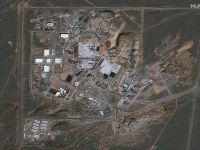The International Monetary Fund (IMF) said yesterday that it expects economic growth in the Middle East and North Afirca region to stagnate this year and drop slightly to about 4 percent in 2012.
The IMF’s World Economic Report released yesterday said social unrest and oil price fluctuations were causing large uncertainties in the MENA economies. It slightly cut its growth forecast for the region by 0.1 percentage point to 4 percent in its quarterly World Economic Outlook. “Commodity price movements and social unrest continue to shape the region’s experience and prospects,” the IMF said.
Uncertainties prevail
“The short-term outlook is still subject to unusually large uncertainties, stemming mainly from the fluid political and security situation in some MENA economies as well as growing uncertainty about external demand,” the IMF report said. The IMF predicts growth in oil-exporting countries including Iran will reach 5 percent this year and drop slightly to about 4 percent in 2012, as uncertainty over the global economy prevails.
Qatar will continue to lead the economic expansion in this category on the back of its growing natural gas exports, as well as Iraq and Saudi Arabia. However, growth in Qatar this year has been slightly revised down from 20 percent forecast in April to 18.7 percent.
The pace of expansion of Qatar is expected to narrow sharply to 6 percent in 2012. The UAE’s gross domestic product is projected to grow 3.3 percent this year and is expected to reach 3.8 percent in 2012. Saudi Arabia’s projected economic growth in 2011 has also been cut from 7.5 percent forecast in April to 6.5 percent. The largest Arab economy is expected to grow by 3.6 percent next year.
Inflation may ease
MENA inflation will remain elevated in 2011 but will fall somewhat in 2012, reflecting receding commodity prices. Inflation is forecast to fall from 10.75 percent in 2011 to 7.5 percent in 2012 for oil exporters, while staying under 8 percent during 2011—12 for oil importers.
The IMF said the outlook for the whole MENA region was “subject to large downside risks”. “External risks relate to the unfolding weaker outlook in the United States and Europe, which could sharply depress activity and hence commodity prices or further slow external financing flows to the region,” the report said.
“However, most risks pertain to continued domestic instability, compounded by intraregional contagion. The political turmoil has seen risk premiums rise and private financing and tourism receipts fall; not only in those economies directly affected by the turmoil but throughout the region,” it added.








